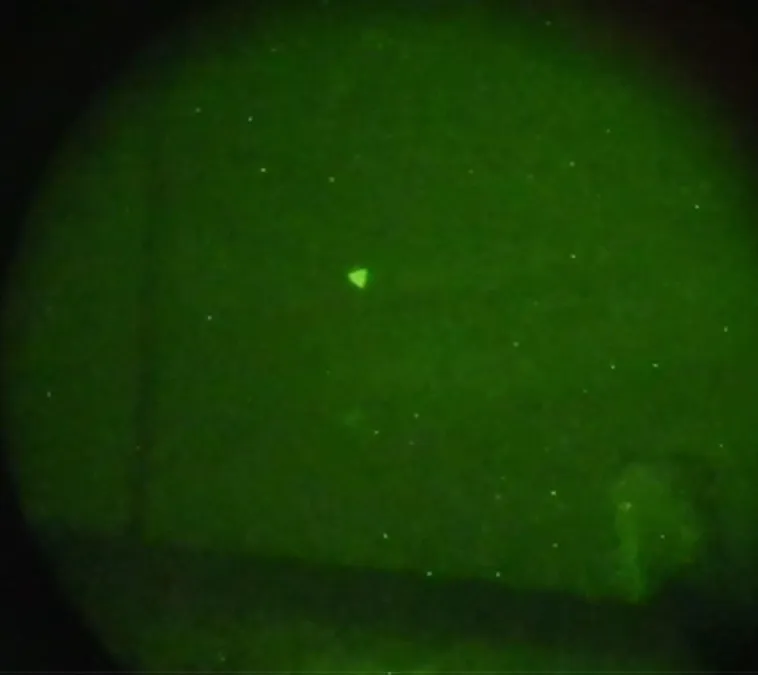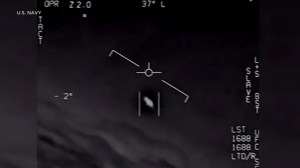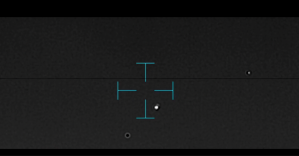Pentagon’s UFO office now investigating more than 650 cases of ‘unidentified anomalous phenomena’

Despite some apparent bureaucratic holdups, the Pentagon’s nascent All-domain Anomaly Resolution Office (AARO) is working to strengthen data collection and intelligence analysis capabilities, standardize government reporting requirements, and introduce new digital tools to engage the public on its complex investigation into unidentified anomalous phenomena (UAP) as its caseload grows.
“ARRO is leading a focused effort to better characterize, understand and attribute UAP — with priority given the UAP reports by [Defense Department and intelligence community] personnel, in or near areas of national security importance,” Director Sean Kirkpatrick told lawmakers during a Senate Armed Services subcommittee hearing on Wednesday.
To meet Congress’ requirements, AARO must disseminate a series of reviews regarding its growing portfolio of unfolding UAP investigations and sightings that members of the DOD and intelligence community catalog. The last review, published in July, confirmed the office was digging into more than 500 reports of unidentified anomalous phenomena.
“As of this week, we are tracking over a total of 650 cases,” Kirkpatrick confirmed on Wednesday.
AARO was mandated by the fiscal 2022 National Defense Authorization Act and established that year via a memorandum penned by Deputy Defense Secretary Kathleen Hicks. Mounting pressure from the public and Congress for explanations regarding multiple videos depicting U.S. military pilots’ interactions with baffling objects detected across multiple domains in recent decades led to its inception.
Since then, the U.S. military has also been forced to come to terms with a major domain awareness gap — after recently scrambling to respond to China’s alleged high-altitude spy balloon, then shooting down other mysterious objects in North American airspace that still haven’t been explained publicly.
“Though ARRO is still a young office, the spotlight on UAP in recent months underscores the importance of its work and the need for UAP to be taken seriously as a matter of national security,” Kirkpatrick noted at the hearing.
In Congress’ second open hearing on the historically stigmatized topic of government-aligned UFO sightings in the last half century, Kirkpatrick testified — as the sole witness — on progress his team has made over the last nine months since its inception.
They’ve been both applying existing technologies and building new ones to tackle the challenge.
To make sense of the bizarre happenings detected by humans, sensors and other technologies in the military’s arsenal, his team of more than three dozen experts are applying some automation capabilities and other emerging analytic tools. With natural language processing, for example, Kirkpatrick explained they could “go across all of those reports and look for commonalities — like how many of them are being described as round spherical objects that are maneuvering, how many of them are not maneuvering, how many of them seem to have plume to it?”
He committed to providing the next UAP investigation report by June or July.
Offering a sort of preview to that review and demonstration of the complexities of the teams’ pursuits, Kirkpatrick presented an example of one solved and one unsolved UAP case — each separately caught in different places by MQ-9 Reapers drones’ “field of regard.” Via multiple slides, he also displayed a “heat map” of AARO’s reporting coverage areas (which he pointed out are still very much limited by where military sensors are already deployed), a histogram of recorded sightings, and other learnings.

Pointing to those insights, Kirkpatrick noted that most of the sightings occur at an altitude of 15,000 to 25,000 feet — “ultimately because that’s where a lot of our aircraft are.”
A little more than half of the UAP reported to AARO appear to be round or spherical in shape.
Kirkpatrick also shared that his team has observed that the typically reported features of UAP they’re tracking so far are are “mostly 1 to 4 meters [in size]; white, silver, translucent and metallic [in color]; [flying at] 10,000 to 30,000 feet with apparent velocities from stationary to Mach 2.”
“No thermal exhausts are usually detected. We get intermittent radar returns. We get intermittent radio returns and we get intermittent thermal signatures,” he added.
Kirkpatrick stated that AARO’s research “has found no credible evidence thus far of extra-terrestrial activity, off-world technology, or objects that defy the known laws of physics.” Still, in his view there’s a lot to be gained in determining that a UAP isn’t of “exotic” origin.
Members of the U.S. national security community have suggested that some of the unidentified objects sighted could be advanced aircraft developed by other countries such as China.
Responding to lawmakers’ inquiries, Kirkpatrick said Beijing is already on par or ahead of the U.S. in deploying certain emerging and potentially disruptive technologies. Drawing from his prior experience as a DOD intelligence officer, he said China is advancing rapidly in this context.
“They are less risk averse at technical advancement than we are. They are just willing to try things and see if it works. Are there capabilities that could be employed against us in both an [intelligence, surveillance and reconnaissance] and a weapons fashion? Absolutely. Do I have evidence that they’re doing it in these cases? No, but I have concerning indicators,” he said.
The AARO is supporting the Biden administration’s “Tiger Team” effort to deal with stratospheric objects such as China’s high-altitude balloon, he noted.
“When previously unknown objects are successfully identified, it is AARO’s role to quickly and efficiently hand off such readily explainable objects to the intelligence, law enforcement or operational safety communities for further analysis and appropriate action. In other words, AARO’s mission is to turn UAP into SCP: somebody else’s problem,” Kirkpatrick said.
At this point, AARO is organizing a lot of the information it uncovers on a classified web portal. But the office hopes to soon provide an unclassified web portal to better inform the public of its findings.
Officials are also working with the Joint Staff to issue guidance to all the U.S. military services and commands that establishes official reporting requirements, timelines and expected data collection actions associated with their sensors or other tools that could help inform AARO’s investigations. That could be released in the next few weeks, Kirkpatrick said.
“The next thing that comes after that is a plan that will go out to the commands for mitigation and response,” he noted.
However, the office appears to be encountering some administrative slowdowns, which were hinted at several times during this hearing.
Congress previously directed AARO to generate and manage a discoverable and accessible electronic platform and methods for potential witnesses of UAP incidents and potential participants in associated government-related activities to present their stories.
Kirkpatrick confirmed his team “submitted the first version of that before Christmas” — but they do not yet know when their “superiors” in the Pentagon will respond with feedback, or when the tool may be launched.
“We have a number of public engagement recommendations,” he said, that are also “awaiting approval” from the Office of the Undersecretary of Defense for Intelligence and Security.
Further, while AARO is under I&S’ purview, Kirkpatrick is supposed to report directly to Deputy Defense Secretary Hicks. When asked at the hearing if he’s steadily briefing Hicks and whether he would prefer “different reporting lines,” he referred the inquiries back to officials in I&S and the Office of the Director of National Intelligence.
“The deputy secretary and Dr. Kirkpatrick have met — but beyond that I don’t have more details to provide,” a Pentagon spokesperson told DefenseScoop on Wednesday.






